The Broke Backpacker is supported by you. Clicking through our links may earn us a small affiliate commission, and that's what allows us to keep producing free content 🙂 Learn more.
Travelling the globe and backpacking the world offers up the opportunity for unparalleled adventures, cultural explorations, and the chance to make the memories that last a lifetime (or at least until Alzheimer’s kicks in).
Yet, amidst all the excitement, international travel (especially the prolonged, backpacky type) presents plenty of challenges too. One challenge that all too many travellers are all too familiar with is the one of moving money across international borders.
For many travellers, international money transfers can be a lifeline—whether for managing emergencies, extending stays, or simply ensuring that financial obligations back home are met. They are also part and parcel of the Digitally Nomadic experience. But as anybody who has ever been executed one will testify by god can they be expensive.
In this post, we are going to take a close look at how international money transfers work, how much they can cost and what you can do to cut those costs.

The Broke Backpacker is supported by you. Clicking through our links may earn us a small affiliate commission, and that's what allows us to keep producing free content 🙂 Learn more.
How Traditional Money Transfers Work
Let’s help you enhance your grasp of the travel banking system. Whenever an international money transfer is initiated, here’s what unfolds
The sender tells their bank (whether online, on the phone or in person) that they want to send a certain amount of money to a stated recipient in a foreign country and provide the relevant international banking details (such as an IBAN and/or a BIC).
At this stage, the bank will usually ask the sender whether they want to guarantee how much the recipient receives or not, and we will come back to this point and its relevance later.
The sender’s bank then debits the account holder the agreed amount in their native currency, converts it into the recipient’s currency internally, and then sends it into the recipient’s bank using the SWIFT intentional payment system.
In instances where the 2 banks don’t have a direct relationship, they will go via a 3rd party bank. Note that in some rare and extreme cases, a transfer can go through up to five different 3rd party banks!
Finally, the funds arrive at the recipient’s bank (in their own currency remember) and they credit the recipient’s account.
There are quite a few steps involved here and it is for this reason that international transfers can sometimes take several days to complete.

A new country, a new contract, a new piece of plastic – booooring. Instead, buy an eSIM!
Jetpac eSIMs work just like an app: you download it, pick your plan, and BOOM! You’re connected the minute you land. It’s that easy.
Read about how e-Sims work or click below to see one of the top eSIM providers on the market and ditch the plastic.
Grab an eSIM!Costs of Traditional International Money Transfers
At every single one of the stages outlined above, the sender is being charged and we will now look closer.
Firstly, whenever a sender instructs their bank to execute a foreign transfer, the bank will levy a SWIFT fee. This can either be a fixed amount or a percentage of the amount being sent.
In the UK, these fees range from £2.75 to £13 and in the US, the range is generally between $2.00 and $15. Of course, if you are sending £100, getting charged a fee of £13 will sting. And yet it gets worse. MUCH worse.
Not only do banks charge foreign transaction fees, but they also apply a Foreign Exchange (FOREX) mark-up. This means that rather than exchanging the currency at the standard market rate, they use their own “mark-up” which allows them to make a little extra profit usually of around 3 – 5%.
Then, the recipient’s bank will also charge a fee for handling the transaction as will any 3rd party banks that are used in the transfer.
Check out our in-depth explanation of how travel foreign exchange works here.
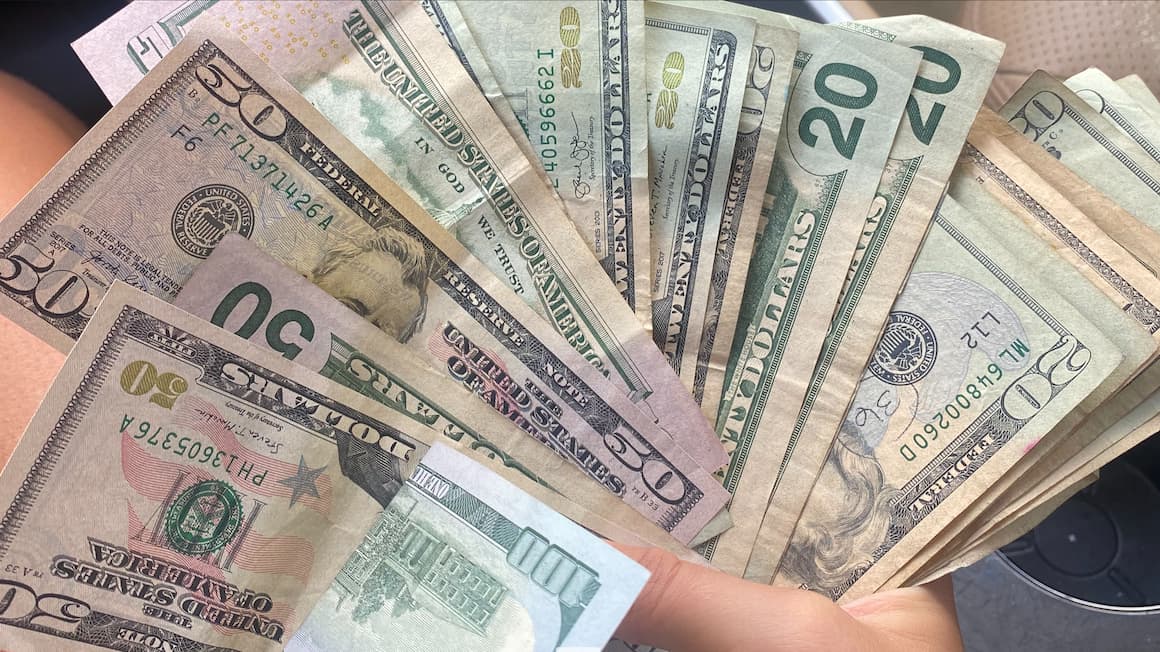
Photo: @amandaadraper
Lets now illustrate this with an example;
- Josh sends £100 to his friend Jane who lives in the US.
- Josh’s bank charges him a £5 transaction fee and then changes the remaining £95 into USD.
- Instead of converting the £95 to $119.99 USD (as per the market rate) the bank uses their own exchange rate and converts it to $114.99 and sends the money on.
- Jane’s bank then deducts a $10 fee, before crediting $104.99 to Jane’s account.
On the face of it, Jane ‘should‘ have received $126.30 (using rates as at 06/02/2024) but only received £104.99. That’s a whopping $22 that has disappeared into the ether.
Of course, if Jane was expecting to receive a fixed amount, then she may well be very peeved and Josh may even be required to make up the difference by executing a second transfer (incurring a second set of fees!).
Ways To Save on Money Transfer
It goes without saying that relying on the banks to execute an international transfer is an expensive folly. Whether you’re a budget backpacker or any type of traveller, there are plenty of alternatives to consider and we shall now look at a few.
Wise (formerly TransferWise):
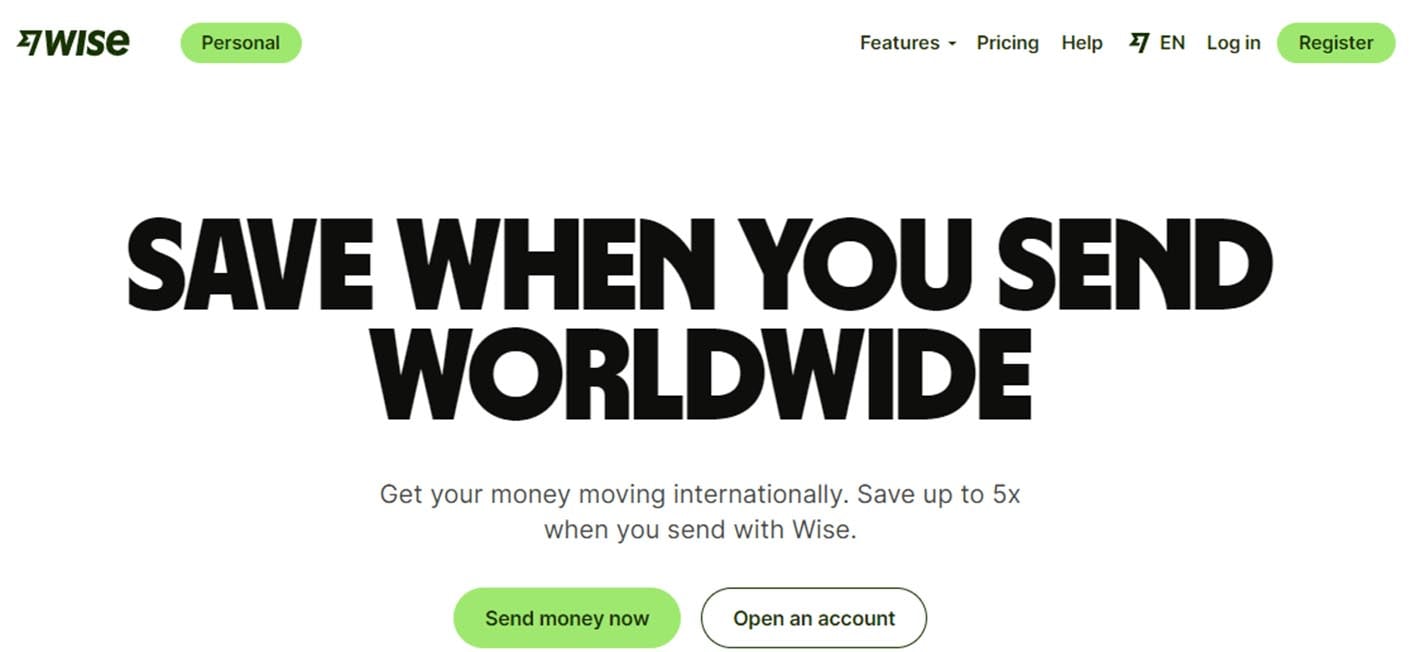
Launched in 2011, Wise has rapidly emerged as a frontrunner in the realm of international money transfers, distinguishing itself with its transparent fees, real mid-market exchange rates, and user-friendly platform. Initially founded with the vision of making international banking cheaper, faster, and more accessible.
TransferWise has expanded its offerings to include multi-currency accounts and debit cards, catering to travellers, expatriates, and businesses looking for an efficient way to manage global transactions without traditional bank fees.
Wise has earned a fond following from Digital Nomads, Online Traders and backpackers alike on account of its low fees (which start at £0) and very reasonable markups.
In the example we gave above, if Josh had sent £100 to Jane via Wise (as a Wise to Wise transfer) she would have received $125.67.
The ‘downside’ is that in order to lock in the best rates and lowest fees, both parties need to have Wise. That said, accounts are free and easy to open and we suggest you do just this.
CurrencyFair

Founded in Ireland in 2009, CurrencyFair is an international money transfer platform that initially connected users looking to exchange currencies directly, eliminating the need for banks and intermediaries. This revolutionary peer-to-peer model allowed customers to exchange money at rates better than those offered by big banks or by Oligarchic legacy online transfer services like PayPal.
While CurrencyFair transitioned away from the peer-2-peer model in 2023, it still stands out as a solid choice for low cost, fast and efficient money transfers.
At this time they don’t offer a bank card but who knows what the future holds.
Best of all though, Broke Backpacker readers can get 5 free CurrencyFair transfers by signing up using the link below.
Paypal

Surely Paypal needs no introduction. The original fintech start-up is a global behemoth. It is a ubiquitous feature of payment gateways and international transfers.
However, there is a reason why “the Paypal Mafia” (Elon Musk, Peter Thiel et al) are among the richest men who ever lived and that reason is simply that Paypal is bloody expensive to use.
With handling fees of 4% and high foreign exchange mark-ups, Paypal is just as expensive as the banks although, to their credit, they are usually a lot faster.
Remitly:

Established in 2011, Remitly is a digital remittance company focused on transforming the way people send money internationally. With an emphasis on supporting immigrant communities, Remitly offers a reliable, fast, and relatively low-cost service to send money across borders.
It prides itself on its straightforward pricing structure, easy-to-use mobile app, and a wide range of delivery options that cater to the needs and preferences of its diverse customer base, making it a popular choice among those looking to support family and friends back home.
The rates and fees are also a lot lower than the banks although personally I am not enamoured with the app.
Payoneer:

Since its inception in 2005, Payoneer has become a global financial services company that provides online money transfer and digital payment services. Payoneer stands out for its comprehensive solutions that empower entrepreneurs, freelancers, and businesses to send and receive funds internationally as easily as they do locally.
With its robust platform, users can benefit from cross-border payments, marketplace payouts, and a suite of services designed to facilitate global commerce, making it an invaluable tool for professionals and businesses expanding their international footprint.
While Payonner had a strong start in the world of low-cost transfers, I have met a few travellers who have had funds frozen for unclear reasons and found customer support slow in getting them released.
Travelex Australia:
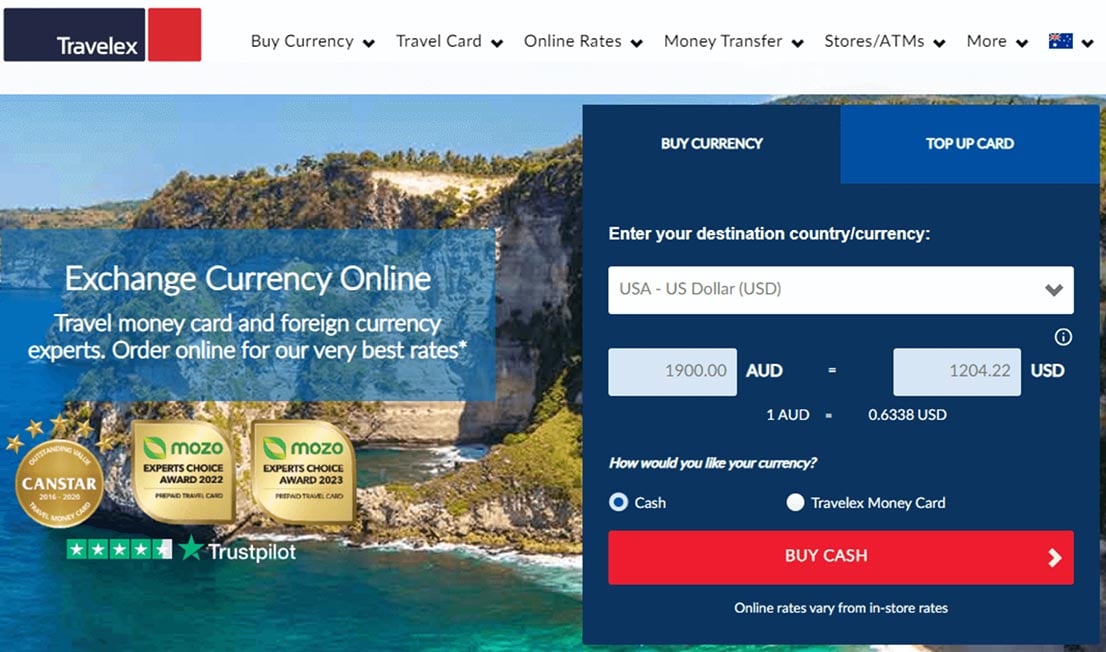
Travelex is a well-established name in the foreign exchange industry, with a strong presence in Australia where it offers a broad spectrum of currency services.
Renowned for providing currency exchange, international money transfers, and a range of travel-related financial services, Travelex Australia caters to the needs of travellers and those requiring foreign currency solutions.
With a network of stores across the country and a convenient online service, Travelex Australia ensures that whether you’re travelling abroad or sending money overseas, you have access to competitive exchange rates and expert advice, making it a go-to choice for Australians seeking reliable and efficient foreign currency services.
While Travelex is not limited to Australians, there are specific conditions for non-residents and travellers in Australia.
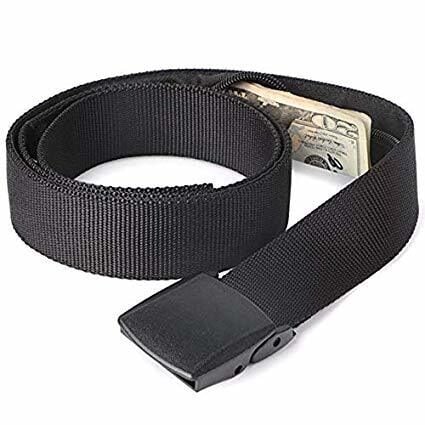
Stash your cash safely with this money belt. It will keep your valuables safely concealed, no matter where you go.
It looks exactly like a normal belt except for a SECRET interior pocket perfectly designed to hide a wad of cash, a passport photocopy or anything else you may wish to hide. Never get caught with your pants down again! (Unless you want to…)
Hide Yo’ Money!Final Thoughts on Low Cost Money Transfers
In the quest for cost-saving measures, turning to low-cost apps that bypass traditional banks is a smart move. Services like TransferWise have truly revolutionised the way travellers manage and access their money across borders.
By offering the real exchange rate—the same one you find on Google—and charging low, transparent fees, platforms like these can save you a considerable amount compared to bank transfers.
Moreover, many of these services offer great additional features beneficial for travellers, such as multi-currency accounts and debit cards that allow you to spend and withdraw money abroad without hefty fees.
While international money transfers can seem daunting, understanding the process, being aware of the costs involved, and knowing how to save on these transactions can make all the difference.
- Stay savvy and protect your money while on the move.
- Deepen your understanding of how travel foreign exchange works to ensure you make informed decisions every step of the way.
- Broke backpackers, gear up with our budget travel guide!
- Thinking big? Discover the true cost of travelling the world before you kick-off the adventure.
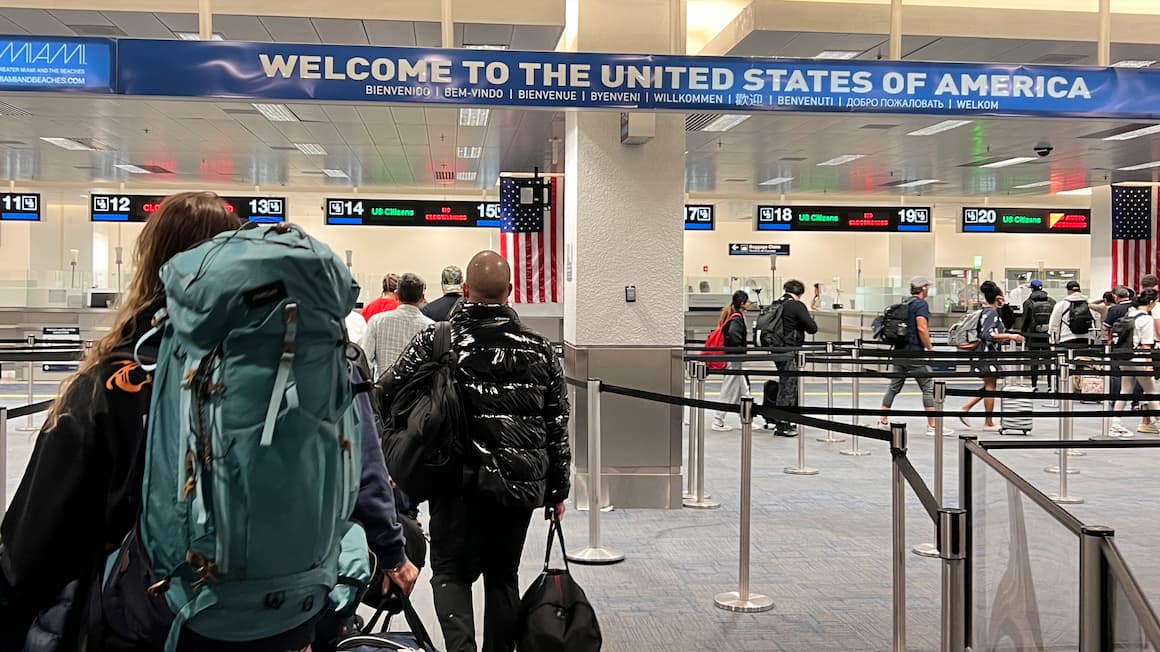
Photo: @amandaadraper
Buy Us a Coffee!
A couple of you lovely readers suggested we set up a tip jar for direct support as an alternative to booking through our links. So we created one!
You can now buy The Broke Backpacker a coffee. If you like and use our content to plan your trips, it’s a much appreciated way to show appreciation 🙂






